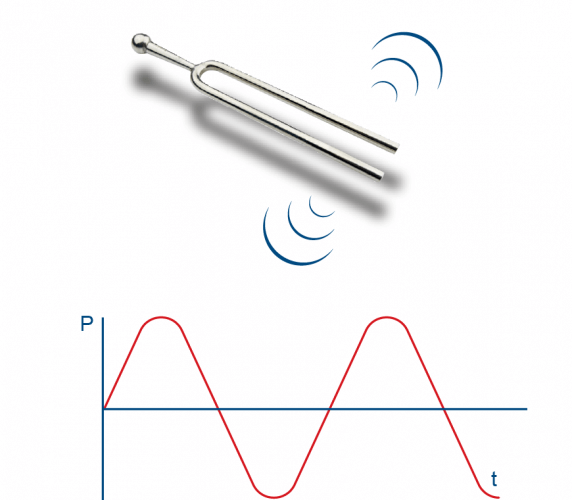Digital density measurement using the oscillating U-tube principle

The example of a tuning fork shows that by applying a mechanical impulse one can generate a sound with a characteristic pitch. This sound is the result of the oscillation created by deflecting the prongs of the tuning fork. A determining factor in the pitch of the note obtained, and thus of the oscillating frequency, is the mass of the tuning fork.
Digital density measurement puts this relationship to use by means of the U-tube oscillation principle. The extremely fine capillaries are made to oscillate by a piezoelectric or magnetic transducer with a characteristic frequency.
The resulting resonant frequency of the U-tube will depend on the mass of the filled sample. This frequency can be measured very accurately and used to calculate the density of the sample. The physical relationship of oscillation frequency (the reciprocal of the period of oscillation) to density is very simple and linear.
Accordingly, calibration is only possible with two standards as a rule – air and water.
What is Density?
Density ρ is a characteristic property of materials and indicates the relationship of mass m to volume V. It is measured in g/cm³ or kg/m³. For high-precision measurements, the most significant influencing factor is the temperature of the sample. It is essential therefore that modern density meters are equipped with efficient temperature control of the measurement room.
Relationship of density to temperature
| Temperature [°C] | Ultra-pure Water [kg/m³] | Air [kg/m³] |
|---|---|---|
| 4 | 999,972 | 1,270 |
| 20 | 998,203 | 1,205 |
| 60 | 983,191 | 1,060 |
Density measurement is often also used for determining the concentrations of mixtures of fluids. Strictly speaking, this applies to mixtures of two substances, also known as binary systems. Extensive concentration tables can be created in DS7800 for our customers to facilitate everyday measurements. However, digital density measurement can also be of significant benefit in analysing complex solutions such as beer or fruit juices.
